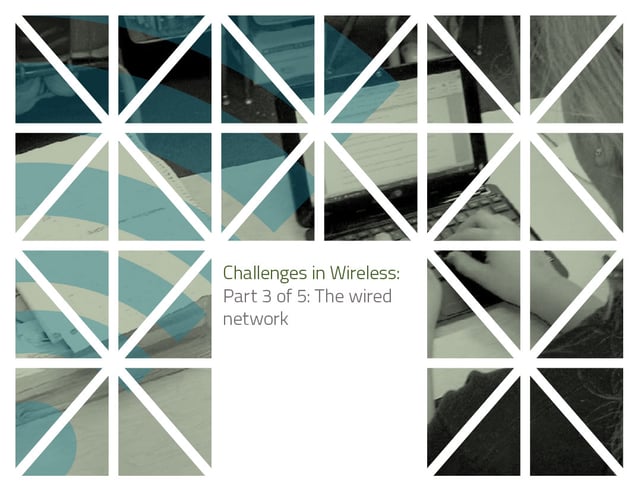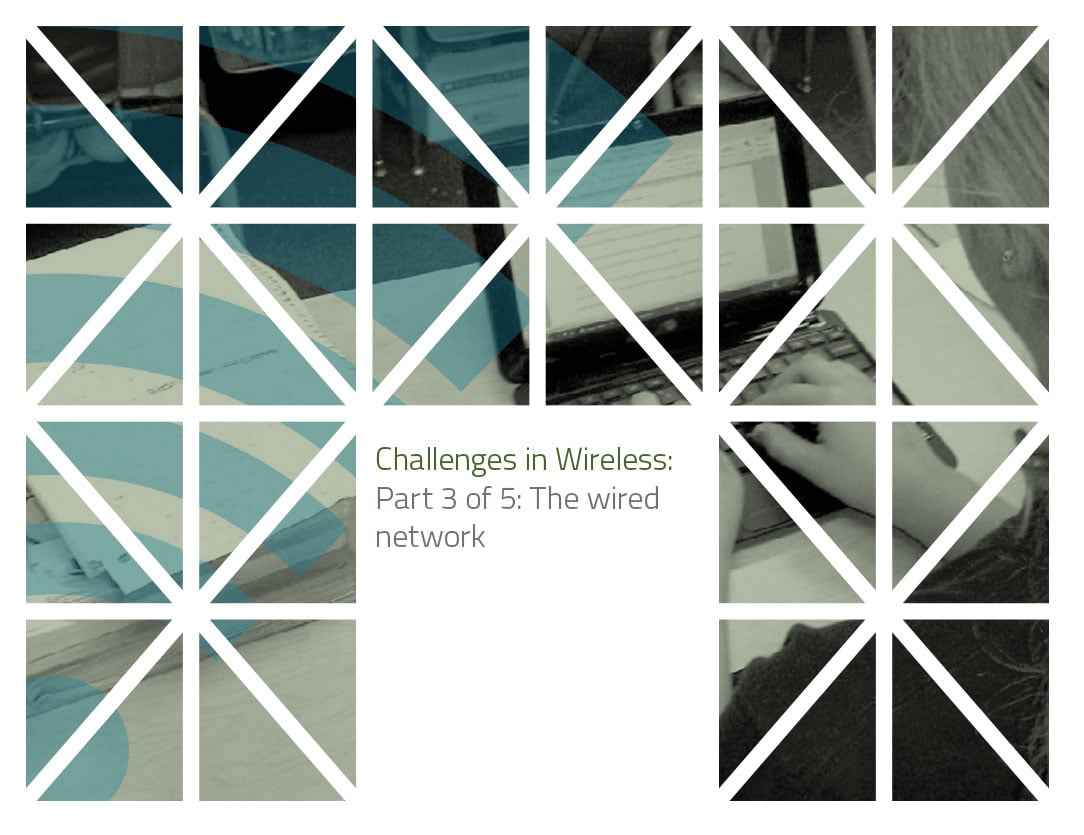
Looking at throughput
We’re considering a crucial question: How do we get the maximum coverage with the least interference and the best throughput?
Our last post covered interference. Today we’ll start talking about bandwidth, asking how big of a pipe we can put through our wireless devices. It’s important to do so because a lot of Wi-Fi devices have great range, but not the density to handle much traffic.
Wireless throughput is king, especially because, in many environments, we’re seeing a huge uptick in the number of people using wireless. If 10% used it five years ago, maybe 70% do today, and probably 90% or more will connect wirelessly a couple of years from now.
Your connection to the Internet
The first thing we have to realize is that Wi-Fi speed depends not just on the wireless devices but on the hard-wired environment that brings the network to them.
The easiest thing to check, and to fix, is your connection to the Internet. Your network management software should provide graphs and charts that show bandwidth utilization. If the demands are higher than the bandwidth coming you are provided, it really doesn’t matter what your network is doing. You WILL have bottlenecks.
Poor switches or wiring
The switches are often the next weakest link. You may have a great wireless design but running it on a undersized network switch. A poor switch design is the biggest stopping point for many of our customers.
Poor wiring is common as well. A lot of times people say, “Well, we have wiring, let’s just install our access points.” Bad wiring is a simple issue, but it seems to be the last one people think of. “We must have co-channel interference, or the walls are too thick.” You want to test your wiring early in the design process and make sure it’s up to speed. Sometimes it’s very hard to pull new wiring, and so you may have to work with what you’ve got. But generally speaking, if the wiring is inadequate, you can replace it.
End point issues
Sometimes your throughput problems will be localized to certain areas within your building. It may be that certain endpoints have obsolete wireless cards or need firmware updates. That’s easy to check, but sometimes the problem moves around. Now you start charting which devices are in which areas when you have an issue. You narrow it down, then examine those devices to find the enemy.
It may be that you settle on your Apple laptops, phones and tablets. Apple devices are a lot more chatty than Windows or Android, and their constant communications with Apple servers will require more throughput than other devices.
Malware
More often in these cases we find viruses or malware, which can bring your network to its knees. Viruses are usually easy to diagnose and fix, but some of the malware can be a major threat to performance. If everything seems to be running perfectly, but slow, it may be that foreign sites are using your devices as servers.
It’s important to constantly push out firmware and software updates for your user devices. Doing so will help minimize the danger from malware and ensure that users are able to communicate efficiently with your network.
The same is true of your switches, access points and other wired network devices. Keep them updated and you’ll have fewer problems.
Next: Separation of traffic












